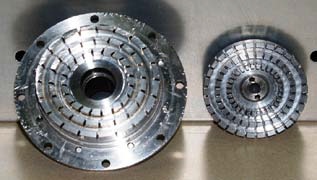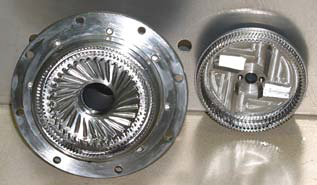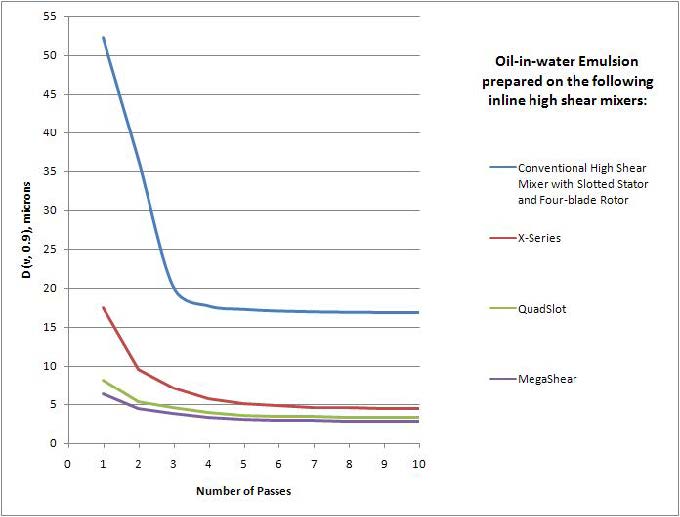Tech Report
Run your rotor/stator mixer at maximum speed to optimize particle size reduction.

Technology Brief
Generally, the maximum speed setting of a rotor/stator mixer provides the optimal mixing results in terms of particle or droplet size reduction. Once an equilibrium size distribution is reached, subsequent passes through the rotor/stator give diminishing returns. For applications that are processed at the maximum speed of a traditional rotor/stator mixer but still fall short of the desired particle or droplet size, a move to higher energy devices, such as ultra-high shear mixers, is recommended.
High Shear Mixers: Operating Theory
High shear mixers feature a four-blade rotor running at tip speeds in the range of 3,000-4,000 feet/min within a close tolerance fixed stator. This type of mixing device creates mechanical and hydraulic shear by continuously drawing product components into the rotor and expelling them radially through the openings in the stator.
Equilibrium Particle Size Distribution
Running the rotor at a particular tip speed yields a corresponding equilibrium, which can be represented through the size distribution of a dispersion or emulsion. Operating below this tip speed, even over a long duration, could produce a different distribution profile. The maximum speed setting of a high shear mixer therefore provides the optimal mixing results in terms of particle or droplet size reduction (with the exception of shear-sensitive applications). Many are reluctant to run their mixer at maximum speed for fear of overworking the machine. As long as the power draw is within the machine`s range, running at the maximum speed is desirable, as you benefit from the highest tip speed that the mixer can deliver. Well-designed mixers work just as well running continuously at maximum speed as at lower speeds.
Running at a higher tip speed vs. running longer
Once an equilibrium size distribution is reached, subsequent passes through a rotor/stator maintaining the same speed give diminishing returns. For applications that still fall short of the desired particle size distribution even at the maximum speed setting of a conventional rotor/stator device, a move to a higher energy mixer design is recommended. Charles Ross & Son Company offers the X-Series, QuadSlot and MegaShear ultra-high shear mixers for products that traditional rotor/stators cannot process adequately.
Ultra-high shear mixers vs. conventional rotor/stators
Ultra-high shear mixers operate at higher tip speeds than conventional rotor/stators, around 11,000 - 18,000 fpm. The product being mixed is subjected to higher levels of shear and more complex turbulent mixing patterns enabling ultra-high shear mixers to produce smaller particle sizes. In many applications, ultra-high shear mixers effectively replace colloid mills and even deliver higher throughput. Ultra-high shear mixers can also finish certain dispersions and emulsions that previously required expensive high pressure homogenizers.
Ultra-High Shear Mixer Rotor/Stator Designs

X-Series
The X-Series head consists of concentric rows of intermeshing teeth. Product enters at the center of the stator and moves outward through radial channels in the rotor/stator teeth. The combination of high tip speed and extremely close tolerances subjects the product to intense shear in every pass. The gap between adjacent surfaces of the rotor and stator is adjustable for fine-tuning shear levels and flow rates.

QuadSlot
The QuadSlot mixing head is a multi-stage rotor/stator with a fixed clearance. This generator produces higher pumping rates and requires higher horsepower compared to an X-Series rotor/stator set running at similar speeds.

MegaShear
The MegaShear operates at the same tip speed as the X-Series and QuadSlot heads, but is even more aggressive in terms of shear and throughput levels. It consists of parallel semi-cylindrical grooves in the rotor and stator towards which product is forced by high velocity pumping vanes. Different streams are induced within the grooves and collide at high frequency before exiting the mix chamber.

Comparing size reduction performance
The above graph shows particle size equilibrium curves for a particular oil-in-water emulsion prepared in a conventional high shear mixer and in the X-Series, QuadSlot and MegaShear ultra-high shear mixers. In high shear mixing, equilibrium is reached in a given amount of time, typically within 5-10 passes through the rotor/stator. Beyond this point, additional mixing will only result in wasted effort, energy and wear and tear on the equipment.